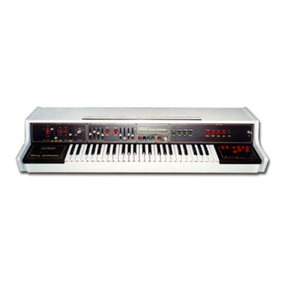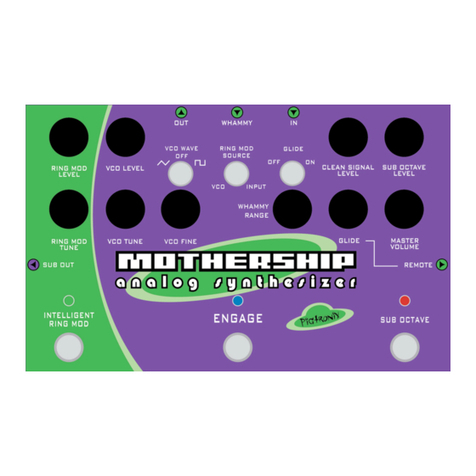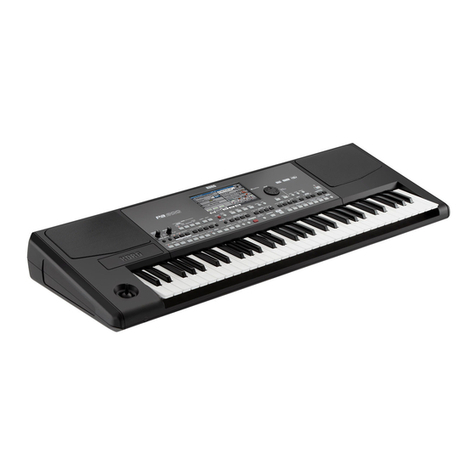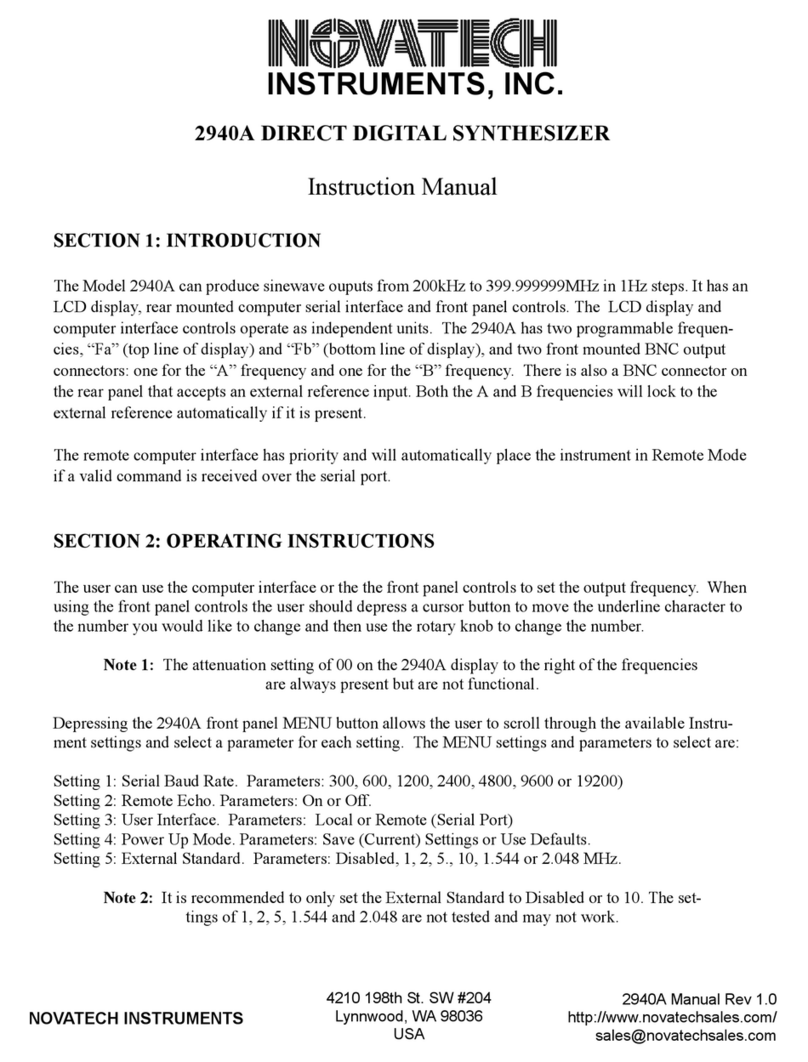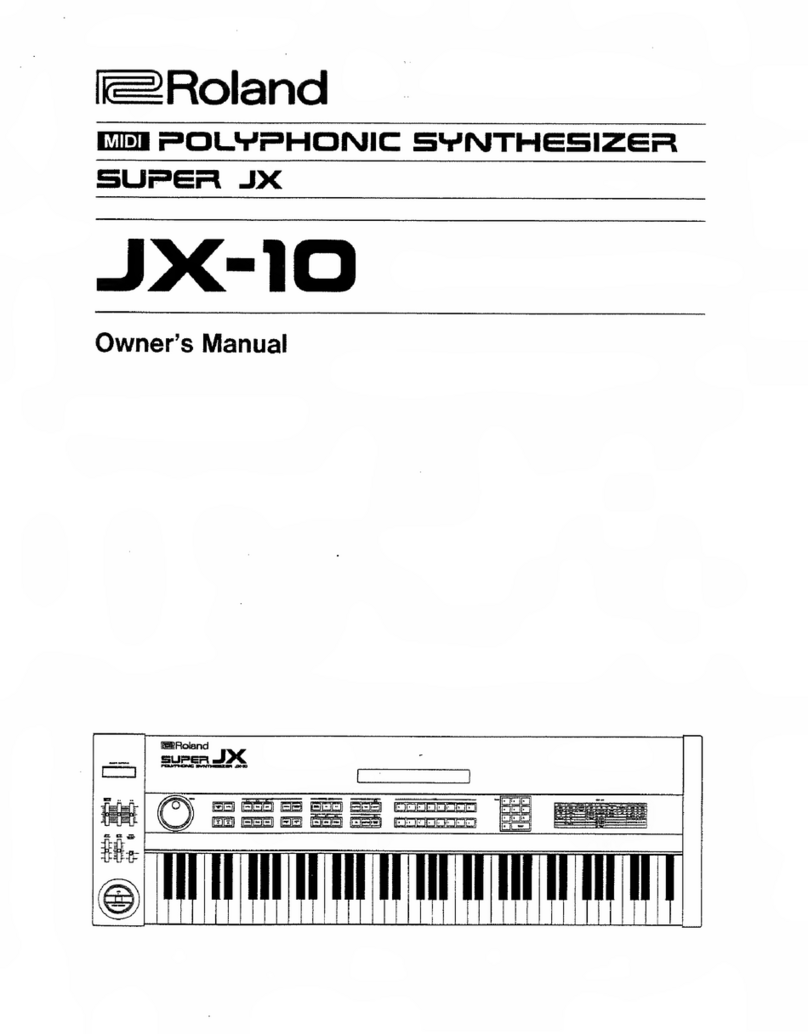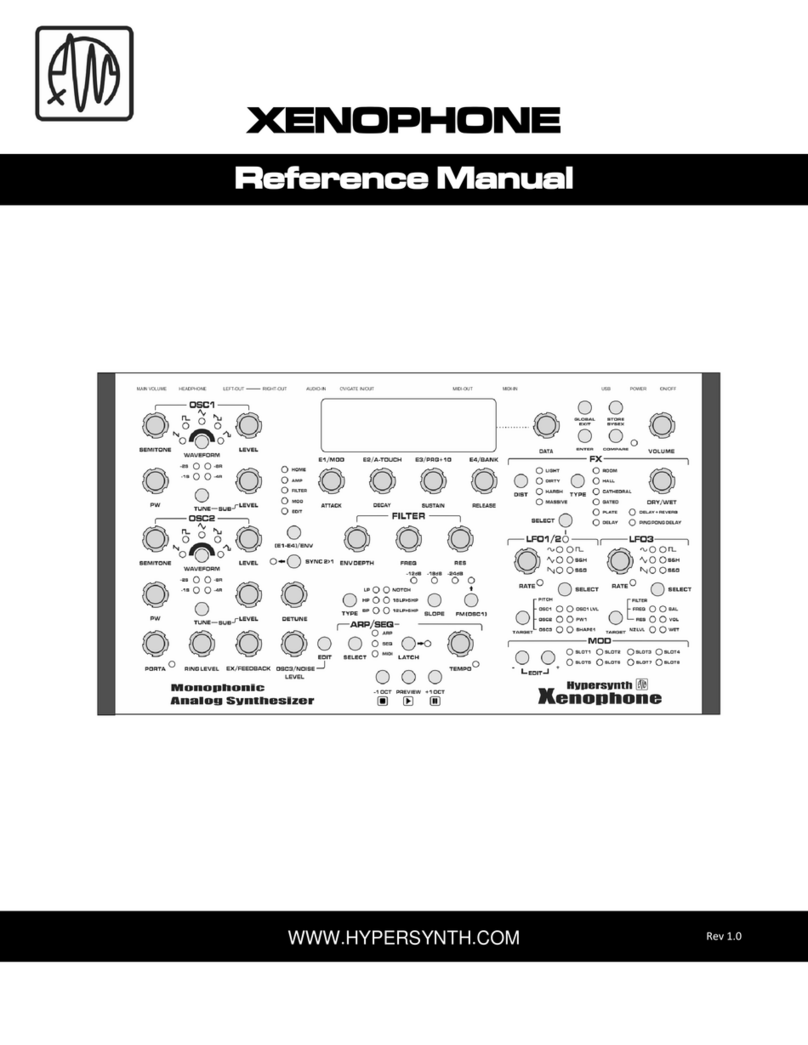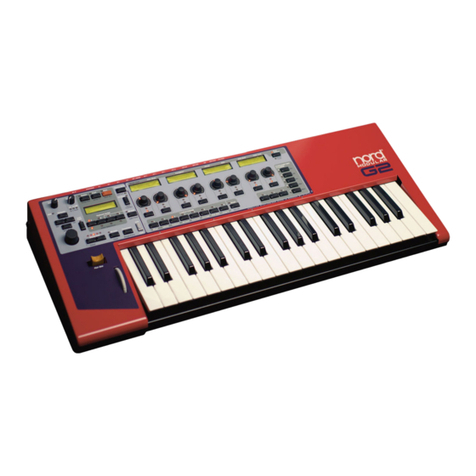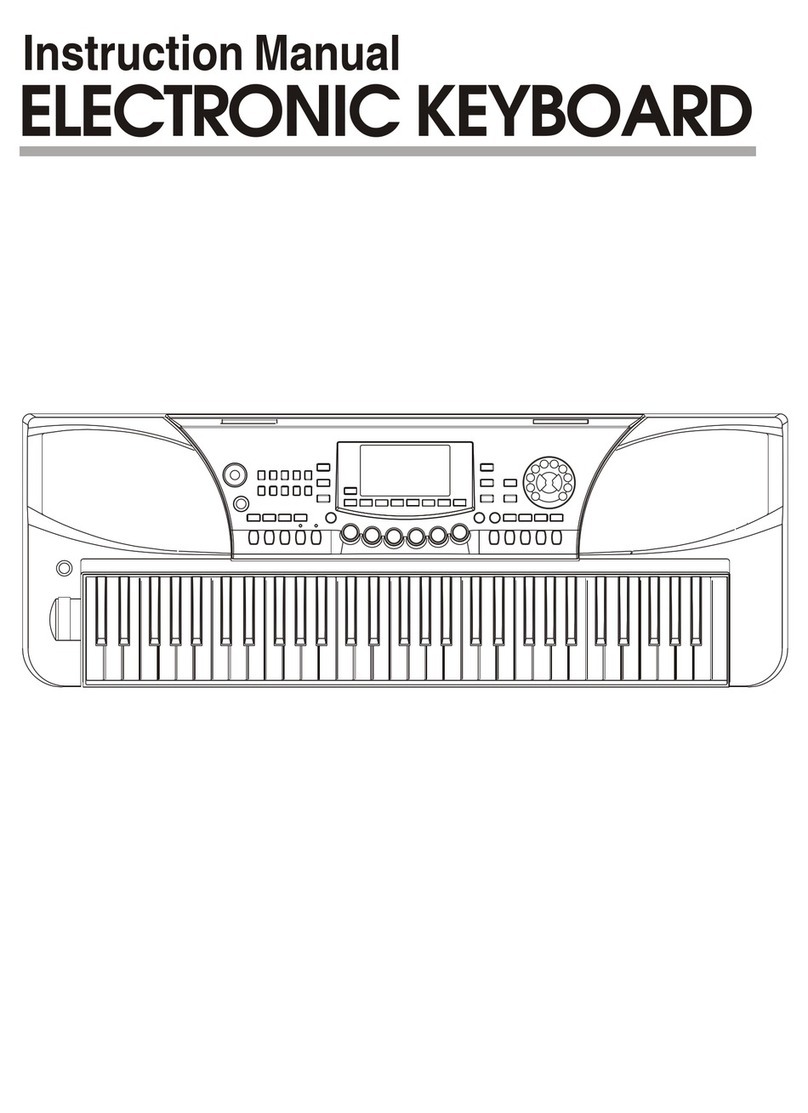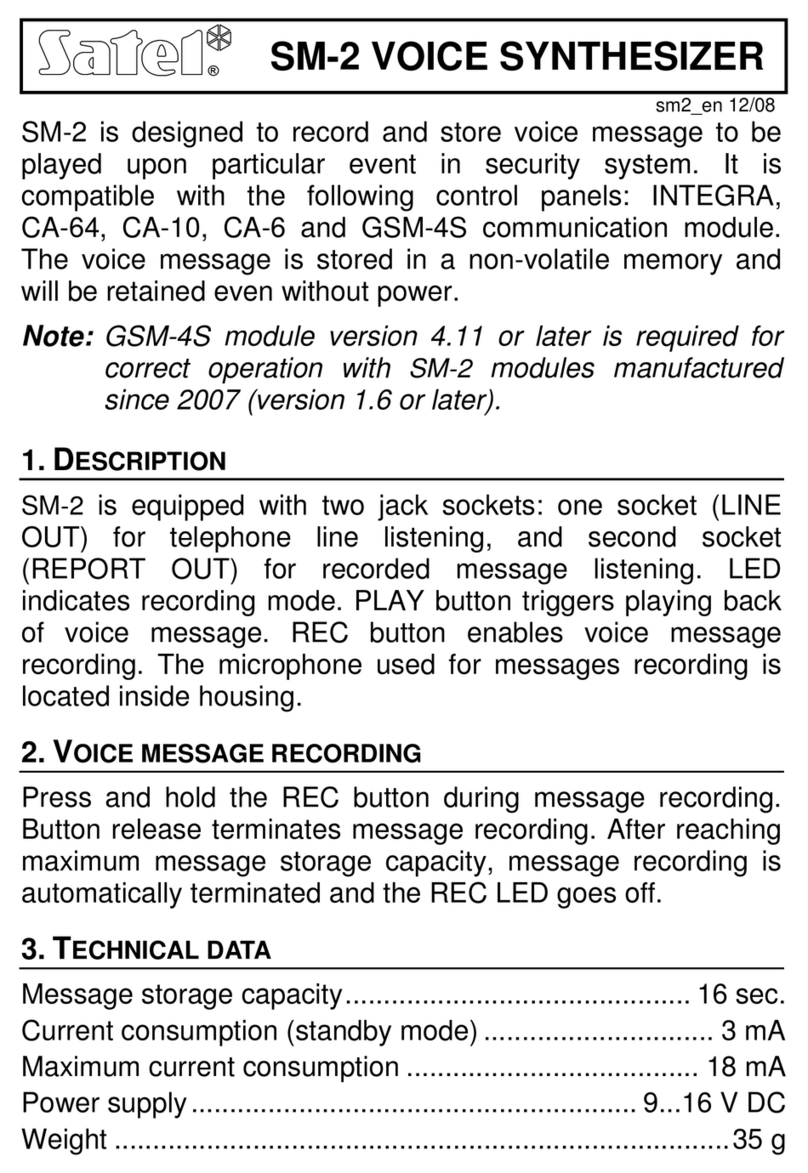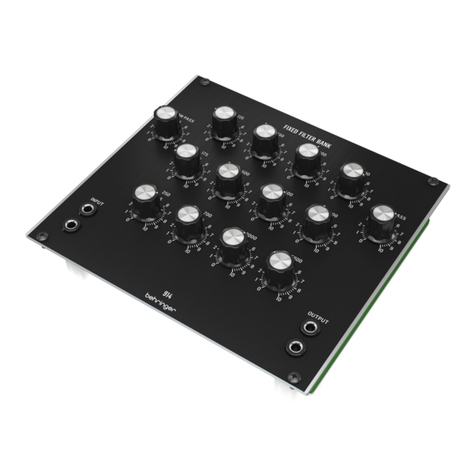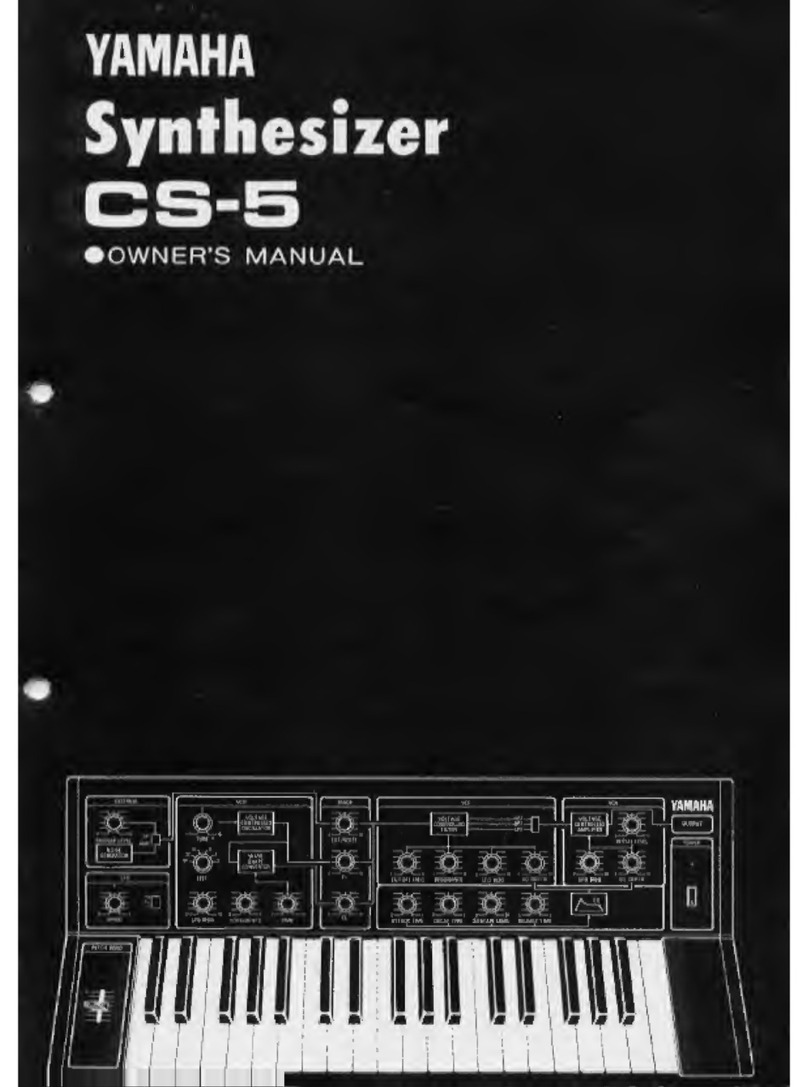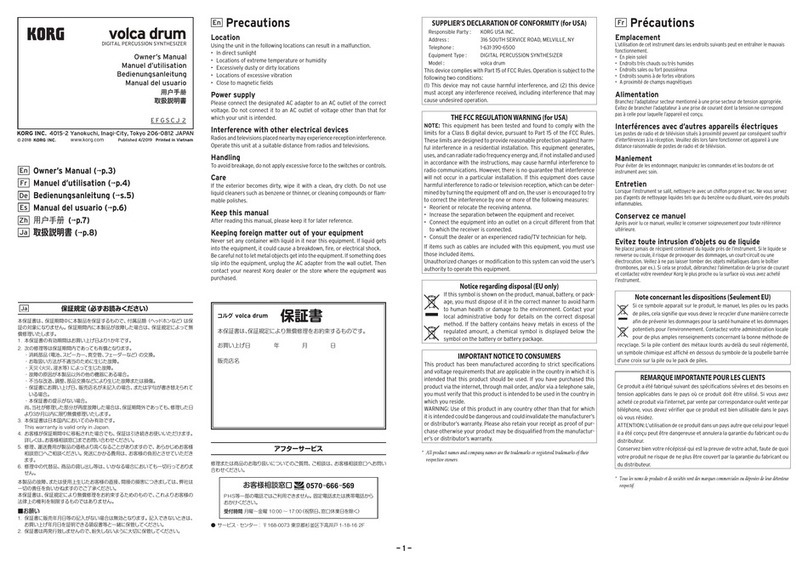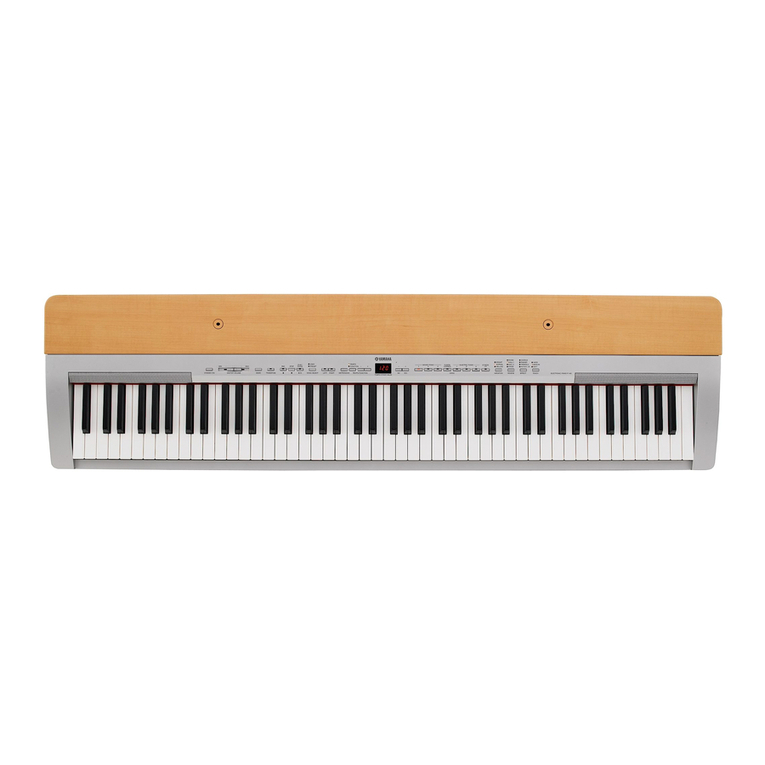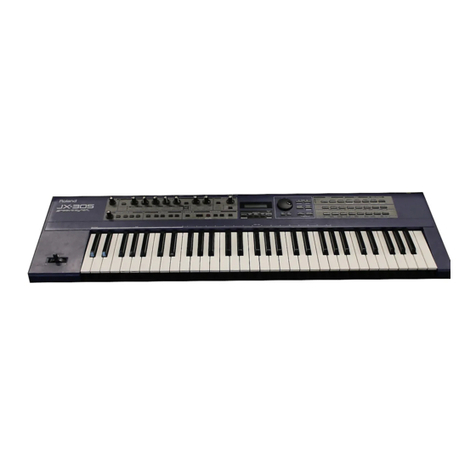Entity Metalloid User manual

The Entity Metalloid is an experimental synthesizer focusing on the creation and manipulation of metallic and synthetic
metal noise. The synthesis engine is devised of three analog oscillators, each operating at a dierent frequency. The output of
these oscillators is ring-modulated through two signal paths and mixed to produce two unique but related metallic tones.
Three macro controls are employed to enhance the variety of tones and harmonic relationship of the synthesized metallic noise.
Through variation of these controls, in-harmonic (ie metallic) tones are by in large dominant. However, varied combinations of
the macros will provide pockets of harmonically locked tones as well.
Since these waveforms are very rich in sub, and overtones, two state variable VCFs are used to carve, mask and high-
light the dense and varied frequency content of the metallic noise sources. Dynamics are governed via two envelope generators
with voltage controlled decay time.
There are a number of useful functions included in the design - you are encouraged to read through the this guide to
fully understand the level of control and available functionality the Metalloid has to oer, especially for the creation of complex,
multi-dynamic grooves.
I would very much like to thank Jason Lazzara (Dysonant) for the development and original idea of the metallic noise
synthesis engine used in the Metalloid. Jason is a modular performance artist and co-founder of the New York Modular Society
and associated NYMS Discord Community.
METALLOID
QUICKSTART

As mentioned in the synopsis, The Metalloid oers the ability to control the signal dynamics in a number of ways.
We will rst focus on this aspect through discussion of the trigger mechanism, VCAs, and VCFs. Later we will discuss the func-
tion of the signal sources and macro controls.
The metallic noise source’s amplitude and lter frequency envelope is controlled when a trigger is patched into the
TRIG input(s). Alternatively, a control voltage may be patched into the associated channel A or B VCA CV input for control over
signal amplitude, only. You may of course utilize both the envelope triggering and VCA CV simultaneously.
Ideally, you would use an external envelope into the VCA CV inputs to trigger a one-shot. Patching a synced and/or
syncopated LFO is also useful in conjunction with sequenced triggers on the main trigger inputs for varied rhythmic eects.
Audio rate amplitude modulation is also a great way to achieve more diverse sounds - however you may want to process your
modulation source through a VCA rst for one-shot sounds. Signal level is controlled via the A-LEVEL and B-LEVEL mini-pot
attenuators. These attenuators alter the internal envelope level, controlling the VCAs. External CV sources patched into the VCA
CV inputs are not aected by the LEVEL attenuators.
When using the trigger input, the internal envelope generator(s) are excited. These envelopes are responsible for
controlling the amplitude (volume) of the associated noise source VCA(s), as mentioned above, but they are also used as an
internal modulation source for the VCFs. The depth of the VCF envelope modulation is adjusted by the A and B-FILTER MOD
controls.
The envelope decay time is altered manually via the A-DECAY and B-DECAY controls. Decay time spans from 10ms to
over a minute. You may voltage control the individual decay times via the associated CV inputs bearing the same labeling.
The A-TRIG input is normalized to the B-TRIG input. This allows both sound sources to be triggered at the same time for
layering the two sound sources. You will notice that under the A-OUT jack, there is a label called (MIX). If only this output is
used, A-OUT provides a normalized mix of both sound sources. Patching out of the B-OUT breaks this normalization, allowing
the signals to be patched out separately. Using the outputs separately oers a bit more gain.
The trigger circuitry responds dynamically to the incoming voltage level. Typically, any trigger source in the 8-10V
range will result in the same maximum signal peak output level. Peak levels are then reduced as the max trig/gate level falls
below 8V. Overall loudness is then reduced as the trig/gate signal falls below 5V. Triggers, gates and fast rising envelopes may
be used to trigger either of the two sound sources. Signals in the 8-10V range will produce a louder signal, but 5V signals work
ne for producing nominal output levels.
In order to create dynamic triggers/gates you will need either a sequencer with variable pulse-width and step
amplitude, or you can patch your trigger/gate into a VCA and control that VCA with a sample and hold that is triggered via the
same trig/gate source and CV controlled via a separate dynamic CV source.
Alternatively, you can use the SSF IMPULSE DYNAMICS module (TBR 2024), which combines these features.
You may also try using the direct output of a sample and hold for a randomized and level based eect.
Successful triggering and amplitude will depend on the current level/state of the sample.
The Metalloid has a unique CHOKE feature that utilizes the internal envelopes of the A and B signals. You may be
familiar with choking a hi-hat, for instance. This feature is implemented dierently than most electronic hi-hat chokes in that
rather than killing the choked signal completely, the Metalloid CHOKE performs a volume ducking eect. Therefore, if the
signal being choked has a long enough decay (longer than the decay of the signal doing the choking), it will be heard again as
the choking signal’s envelope transitions through it’s decay phase.
When the CHOKE switch is set to OFF, neither output will be choked. Setting the switch to either A or B will apply a
choke from the opposing signal. In other words, setting CHOKE to A will use B’s envelope to choke A’s amplitude.
Choking is useful when making sounds that are triggered via the same trigger source (using A-TRIG only to trigger
both sounds), and when using two trigger patterns to excite A and B separately.
Note that the depth of choke is independent of the A and B-LEVEL controls. You may also choke either signal
independently by using a suciently negative control voltage, patched into the A or B-VCA CV inputs.
TRIGGERS, VCA and CHOKE

Sound sources A and B are routed through dedicated state variable voltage controlled lters. The VCF sections of the
module feature a lter topology switch, cuto frequency knob and a bi-polar attenuator for cuto frequency modulation
emphasis. The respective channel’s internal envelope is the source that provides frequency modulation via the A and B-FILTER
MOD bi-polar attenuator.
Because the sounds typically generated by the metallic noise sources involve a wide variety of harmonics, the lters will
play a critical role in consideration of the type of sounds you are emphasizing. For example, you may want to focus on a specic
range of the generated metallic noise spectrum.
Both percussive and non percussive eects are possible when using the three lter types to control the harmonic
content of the signal. Frequency dynamics are further enhanced when using the A and B-FILTER MOD to control the emphasis of
envelope modulation. The applied modulation can be positive or negative as indicated by the bi-polar attenuators. Therefore,
position of the cuto control knob should be considered when sound designing. Also consider that because the internal enve-
lope controls both the amplitude and frequency, some settings can truncate the attack and/or decay of the resulting sound.
Through creative manipulation of the frequency controls, many metallic, percussive, as well as non-metallic and non-
percussive sounds can be synthesized. You are encouraged to experiment with this section of the module and you will nd
that a great deal of variation in sound and groove is possible via the lter section alone.
In addition to the envelope modulation, both the A and B lter’s cuto frequency can be modulated by and external
control voltage by patching into the respective A and B-CUTOFF input jacks.
The metallic noise generator features three main controls; VARIANT, TUNE, and MATERIAL. As mentioned in the synopsis,
the noise is created via utilization of three voltage controlled square wave oscillators. The frequency of these oscillators is
oset from one another in set - and further adjustable ratios. The VCO core is followed by two ring modulation circuits with inde-
pendent output mixers. These signals are then fed into a pair of VCAs and VCFs.
The control labeled VARIANT oers additional detuning of the VCOs. VARIANT is a macro control that osets each of the
three VCOs, in a non-linear fashion where two of the VCOs will increase in frequency and the remaining will decrease in frequency
at an unrelated rate of change. This mostly produces in-harmonic relationships, lending towards metallic tone generation. There
are however pockets of harmonic relationships that exist via this VARIANT control, and will depend on where this control is set in
relation with the TUNE and MATERIAL settings, as well as the current state of the lters. VARIANT can also be voltage controlled
via the VARIANT CV input.
MATERIAL is a non-linear FM bus macro. There are three modes for MATERIAL, selected by the adjacent switch. These
modes switch between various combinations and levels of linear and exponential FM. Sourced from each of the VCOs, these
signals are fed back into a VCA array controlling the FM of the VCOs. The macro controls how much of this FM is applied - from no
modulation at minimum and full eect at maximum. The FM has the eect of changing the metalloid material from solid and
dense to a sparser and thinner sound.
Just like the VARIANT control, there are pockets of harmonic tones within the more vast array of metallic noises. Due to
the complex relationship between the non-linear frequency oset of VARIANT and how those frequencies interact with the
feed-back FM bus, there are many combinations of these controls to explore. This is of course a more experimental approach
to sound design, but such is the experimental nature of the Metalloid and is intended to be embraced and used in this manner.
TUNE controls the overall coherent tuning of the three VCOs. Pitch will increase or decrease in unison and to the same
degree for all the oscillators. This tuning may also be voltage controlled via the TUNE input jack. Metalloid should not be
expected to track v/oct, but that does not mean you cannot control the tuning with sequencers and other control voltages.
You should also try patching external envelopes into TUNE, either synced or un-synced with the excitation trigger. External
audio rate FM is also a great way to FSU and get more complex sounds out of Metalloid.
VOLTAGE CONTROLLED FILTERS
METALLIC NOISE GENERATOR
Table of contents
